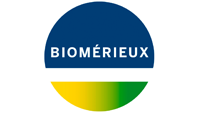Clinicians Report Tools to Monitor the Progression of Sepsis Urgently Needed
07 May, 2009Sepsis progresses so quickly yet there are few clues to indicate treatment is effective.
bioMérieux, a world leader in the field of in vitro diagnostics, today announced the results of three surveys aimed at assessing opinions regarding bacterial sepsis in U.S. hospitals and the importance of new technologies and/or methods to solve current complexities surrounding diagnosis and treatment. The surveys were fielded during recent conferences of the American College of Chest Physicians (CHEST), the American College of Emergency Physicians (ACEP) and the Society for Critical Care Medicine (SCCM).
Over 90 percent of the physicians surveyed reported that they need a tool that would help them monitor the progression of sepsis over a 24-hour period because the condition can so rapidly turn fatal. Sepsis is an inflammatory response to an infection. The condition can be difficult to diagnose because of overlapping and non-specific symptoms, such as elevated heart rate, rapid breathing and fever. Septicemia can rapidly progress to sepsis and then to septic shock, in which the immune system mounts an overwhelming response to an infection, causing widespread blood clotting and inflammation, which is often more dangerous than the infection. Septic shock brings on a dramatic drop in blood pressure and organ failure. As many as 750,000 people in the U.S. are diagnosed with severe sepsis each year, and 200,000 of these patients do not survive (1).
Patients with suspected sepsis are typically treated with antibiotics, but there is no reliable way to know if that treatment is effective. Too frequently, a physician learns that treatment is insufficient only when the patient progresses into full septic shock.
“Due to the lack of advancement in sepsis diagnosis and because we know the importance of timely treatment of sepsis, physicians have been forced to continue diagnosing and treating patients with suspected sepsis based on little more than clinical clues,” said Devendra N. Amin, M.D., FCCP, medical director of Critical Care Services at Morton Plant Hospital in Clearwater, Fla. “Procalcitonin’s simple functionality and nearly immediate usability separate it from the current ‘trial and error’ tests for sepsis. When used in a clinical context, it can be invaluable in diagnosing and managing septic patients.”
Other Findings
Of the 481 critical care, emergency and pulmonology physicians polled in this sweeping survey of the physician specialties that typically diagnose patients with bacterial sepsis, three-quarters reported that the incidence of bacterial sepsis had increased during the last decade – 86 percent of clinicians viewed this trend as concerning or alarming and attributed it to the increasing number of elderly or debilitated patients requiring therapy as well as the widespread use of antibiotics, which encourages the growth of drug-resistant microorganisms.
According to the survey, emergency room physicians are typically the first to see and diagnose sepsis patients. However, there is no gold standard for diagnosing sepsis because symptoms can be vague and/or overlap with other diseases. In fact, 63 percent of physicians viewed overlapping symptoms as the most difficult aspect involved in the diagnosis of sepsis.
Because the risk associated with not treating suspected bacterial sepsis is too great, most clinicians resort to empiric therapy – the prescription of an antibiotic treatment prior to the determination of an accurate and firm diagnosis. However, 75 percent of respondents regard antibiotic resistance as the most concerning effect of antibiotic overuse.
When asked if a test that could rapidly and accurately diagnose sepsis and clinically relevant bacterial infections would be beneficial, a majority of those surveyed were in agreement that such a tool would better tailor the use of antibiotics. And 46 percent believed it would provide a “dramatic improvement” in care.
Developed by bioMérieux, the VIDAS® B.R.A.H.M.S PCT is a 20-minute test to detect levels of procalcitonin (PCT), a telltale sign of systemic bacterial infection. The VIDAS B.R.A.H.M.S PCT recently received 510(k) clearance from the U.S. Food and Drug Administration to assess the patient’s risk of progression to severe sepsis and septic shock. PCT, the prohormone of calcitonin, can be produced by numerous cell types and organs after proinflammatory stimulation, especially when caused by bacterial infection, making PCT an ideal indicator of systemic bacterial infection and sepsis. For more information on bioMérieux’s VIDAS B.R.A.H.M.S PCT test, visit www.biomerieux-usa.com/pct.
PCT tests have been used in Europe for years – 64 percent of clinicians surveyed had heard of the PCT test, but the test is just now making its way into the U.S. medical arsenal.
“This survey validates the fact that we are well overdue for improved tools for sepsis diagnosis and risk stratification. The introduction of the PCT test into the U.S. market will hopefully translate into increased clarity regarding clinical evidence for the need of antibiotics,” said Dr. Jeffrey Nelson, chief of intensive care at Blount Memorial Hospital in Maryville, Tenn.
1 Angus DC, Linde-Zwirble WT, Lidicker J, et al. Epidemiology of severe sepsis in the United States: Analysis of incidence, outcome, and associated costs of care. Crit Care Med 2001; 29: 1303-1310.
About bioMérieux
Advancing Diagnostics to Improve Public Health
A world leader in the field of in vitro diagnostics for 45 years, bioMérieux is present in more than 150 countries through 39 subsidiaries and a large network of distributors. In 2008, revenues reached €1.111 billion with 84 percent of sales outside of France.
bioMérieux provides diagnostic solutions (reagents, instruments, software) that determine the source of disease and contamination to improve patient health and ensure consumer safety. Its products are used for diagnosing infectious diseases and providing high medical value results for cancer screening and monitoring and cardiovascular emergencies. They are also used for detecting microorganisms in agri-food, pharmaceutical and cosmetic products. bioMérieux is listed on the NYSE Euronext Paris market (Code: BIM – Code ISIN: FR0010096479). Other information can be found at www.biomerieux.com.
Media Contacts
Fleishman-Hillard
Tim Baker
Tel: + 1 216-338-8086
Tim.Baker@fleishman.com
bioMérieux
Allan Mohess
Tel: + 1 919-620-2937
allan.mohess@na.biomerieux.com

